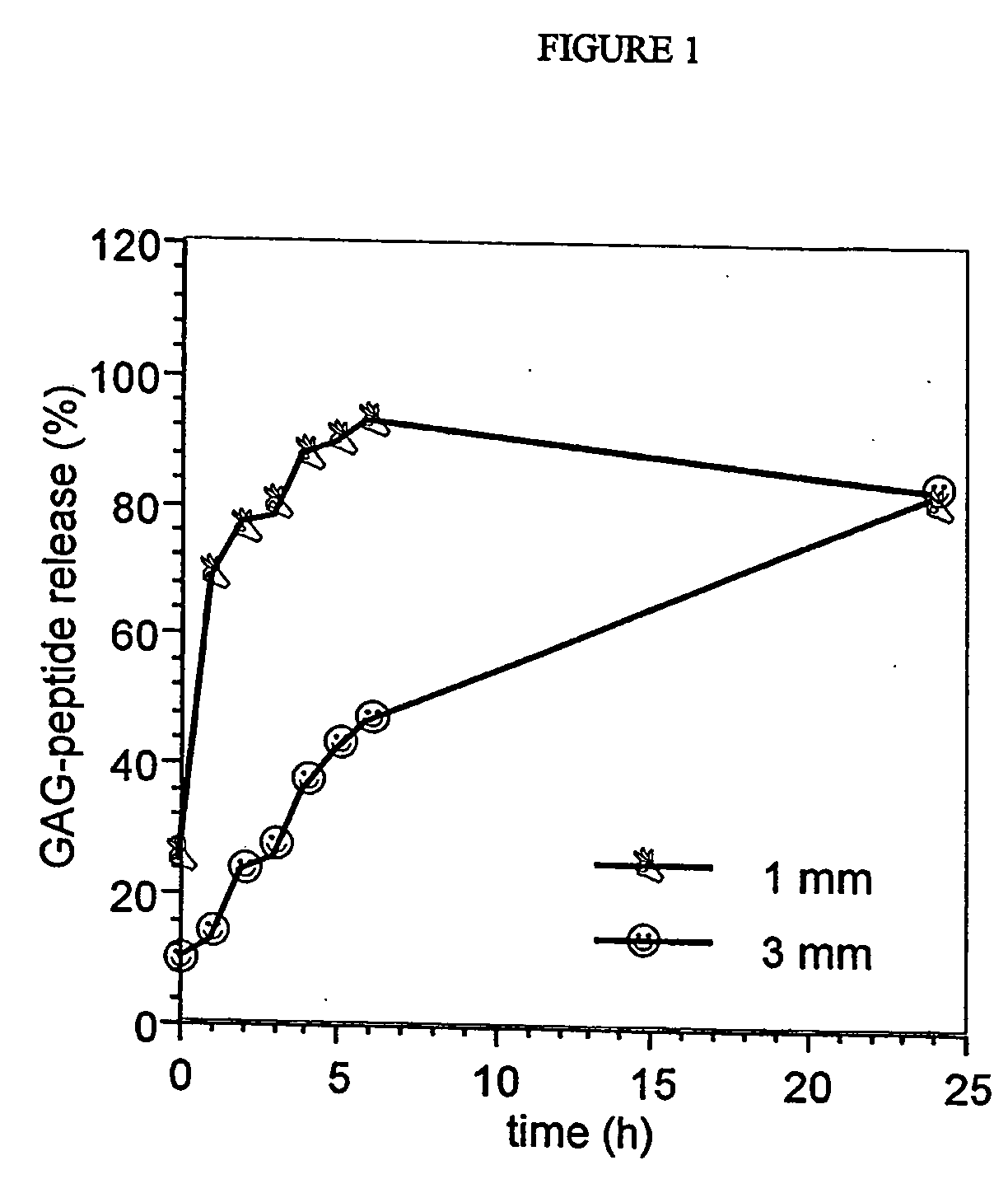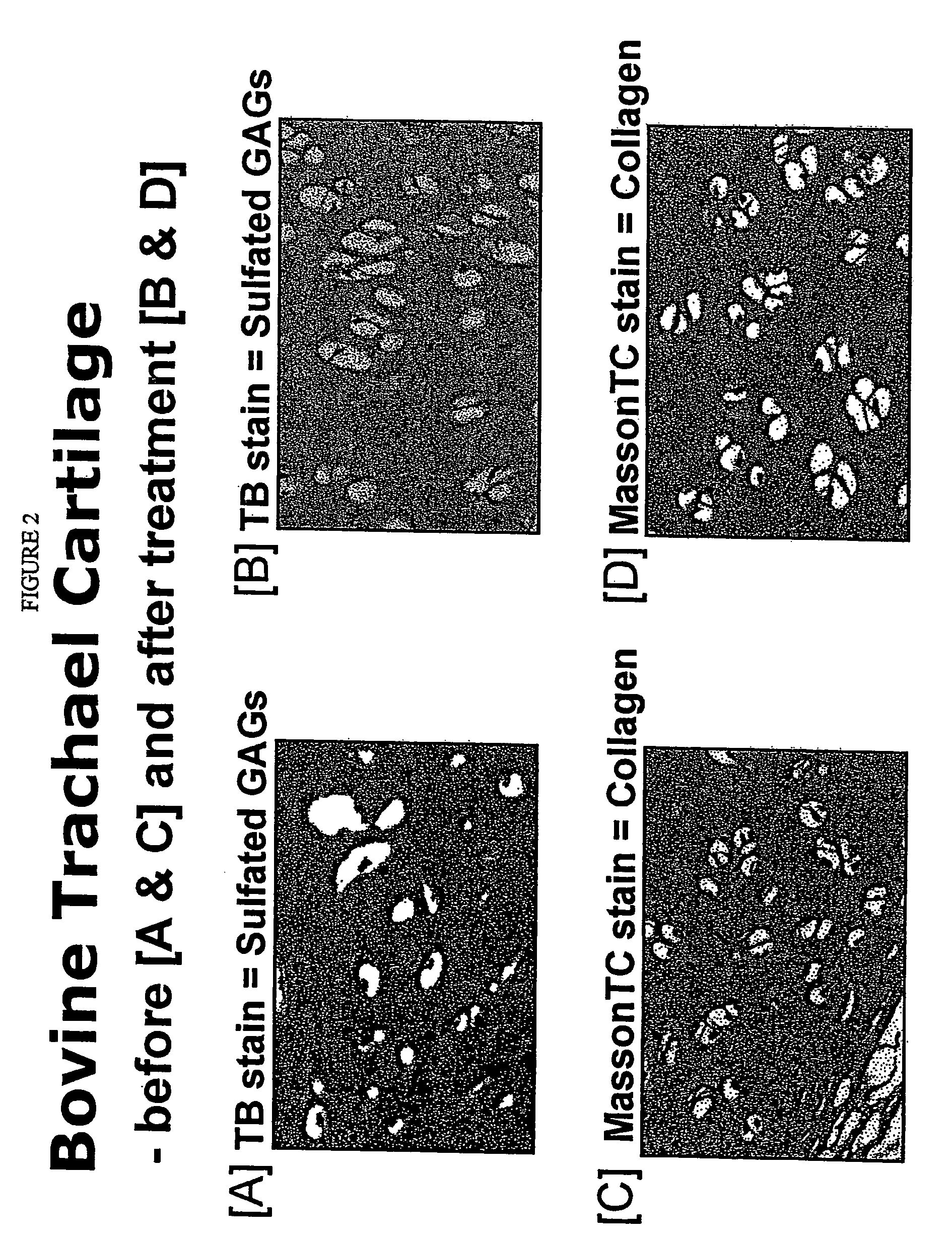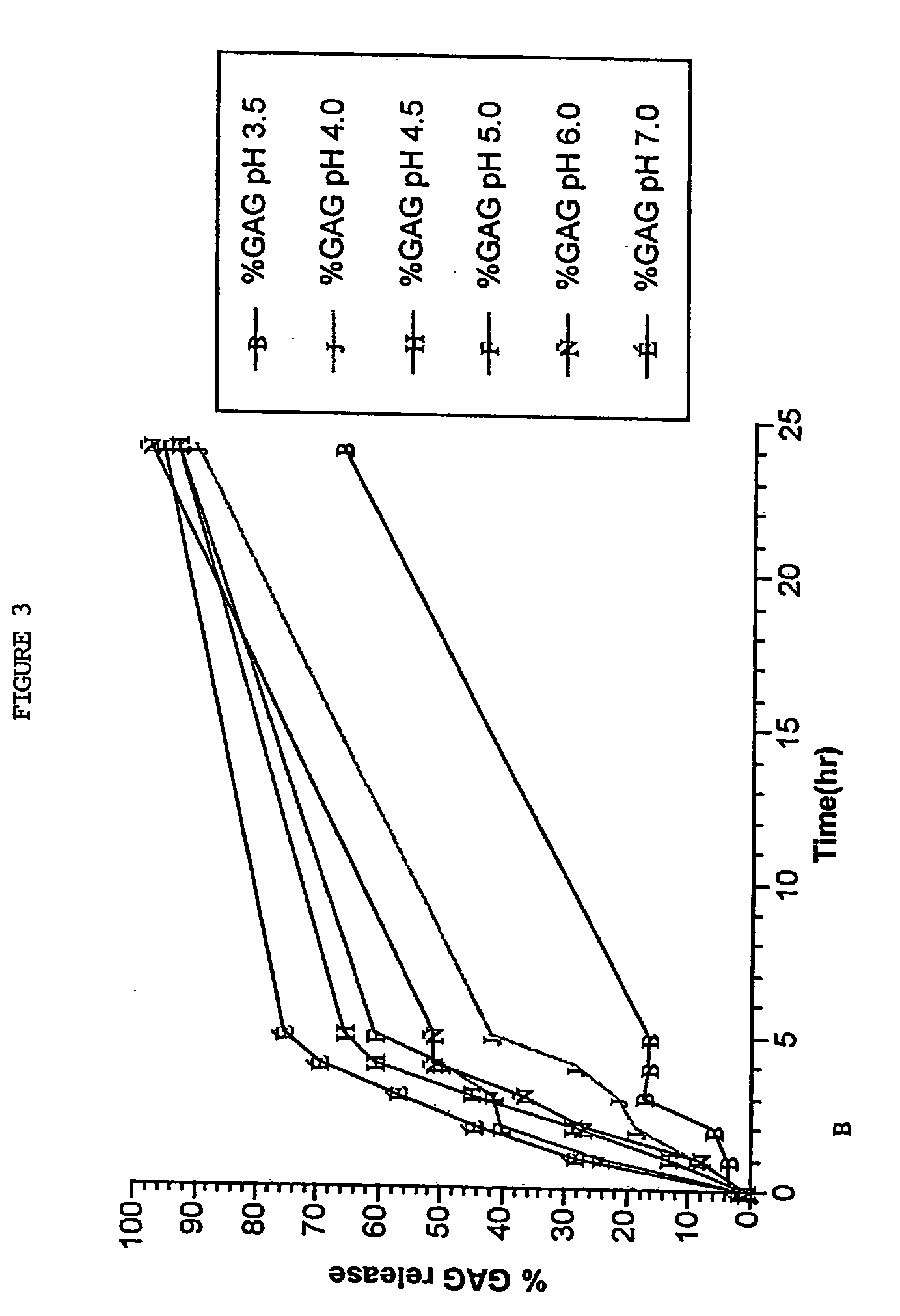Topical compositions for the treatment, protection and restoration of skin and connective tissues
a technology of connective tissue and composition, applied in the field of topical compositions for the treatment, protection and restoration of skin and connective tissue, can solve the problems of affecting the lubrication and protection of articular cartilage, affecting the lubrication effect of articular cartilage, and affecting the lubrication effect of articular cartilage, and none of these methods can readily remove dna and rna, other intracellular contaminants, and preventing the lub
- Summary
- Abstract
- Description
- Claims
- Application Information
AI Technical Summary
Benefits of technology
Problems solved by technology
Method used
Image
Examples
example 2
2.1 Separation of Glycosaminoglycan Peptides (GAG-Peptides) from Polypeptides in Peptacan Preparations by Ion-Exchange Solid Phase Media
[0161] GAG-peptide and polypeptide mixtures released from cartilage using different buffers (eg. sodium or calcium acetate or dilute acetic acid) according to methods described hereinabove and in PCT / AU03 / 00061 (referred to as peptacans) were thereafter separated. First the freeze dried peptacans were dissolved in 0.1M calcium chloride buffered with Tris-HCl to a pH of 7.2 (application buffer) to afford sample concentrations of 4.0 mg / ml. To this solution was added pre-swollen DEAE-Sepharose-6B, or a similar medium, to achieve a final concentration of the ion exchanger of 100 mg / (mL. The mixture was maintained at room temperature with gentle agitation for 16 hours in 5 mL stoppered centrifuge tubes. The tubes were then centrifuged at 1000 rpm for 5 mins and the supernatant decanted off. To the remaining pellet was added 1 mL of the application buf...
example 3
3.1 Preparation of a GAG-Peptide Complex by Limited Hydrolysis
[0162] (i) Preparation of non-hydrolysed tracheal cartilage proteoglycans as a chromatography standard comprised mincing freshly-cleaned bovine tracheal cartilage (3 mm) and suspending 10 grams of the mince in 100 mLs of aqueous 4M guanidinium chloride (pH 5.8) at 4° C. for 48 hours as described by Inerot and Heinegard [Interot S and Heinegard D, Bovine tracheal cartilage proteoglycans. Variations in structure and composition with age. Collagen and Related Research, 3: 245-262, 1983]. The guanidinium chloride and other inorganic salts were dialysed out, the water was removed by freeze-drying and the extracted proteoglycans were obtained as a white powder.
[0163] (ii) Hydrolysis using Bromelain comprised taking one kilogram of freshly cleaned and minced bovine tracheal cartilage, and subjecting the minced cartilage to 5 L of purified water containing 10 grams of sodium bicarbonate and 5 grams of Bromelain maintained at 6...
example 1
[0208] The inventors found that subjecting cartilage particles to autolysis in aqueous buffers maintained within the pH range of 4.0-7.0, particularly 4.5, at 37° C. for periods up to 36 hours, particularly 16 or 24 hours specifically released GAG-peptide complexes and matrix derived polypeptides into solution while leaving the tissue cells and their intracellular macromolecular components essentially in tact. DNA was used as a marker for intracellular macromolecular components and demonstrated that the autolysis medium obtained by the present invention was substantially free of DNA. Moreover, these GAG-peptide complexes released into the autolysis medium, defined arbitrarily as Peptacans when used alone or in combination with other co-released polypeptides are pharmacologically more active than commercially available ChS.
[0209] The release of these cartilage products was found to be more rapid with smaller particles than larger ones (FIG. 1). However, when either cartilage was inc...
PUM
| Property | Measurement | Unit |
|---|---|---|
| molecular weight | aaaaa | aaaaa |
| pH | aaaaa | aaaaa |
| pH | aaaaa | aaaaa |
Abstract
Description
Claims
Application Information
 Login to View More
Login to View More - R&D
- Intellectual Property
- Life Sciences
- Materials
- Tech Scout
- Unparalleled Data Quality
- Higher Quality Content
- 60% Fewer Hallucinations
Browse by: Latest US Patents, China's latest patents, Technical Efficacy Thesaurus, Application Domain, Technology Topic, Popular Technical Reports.
© 2025 PatSnap. All rights reserved.Legal|Privacy policy|Modern Slavery Act Transparency Statement|Sitemap|About US| Contact US: help@patsnap.com



